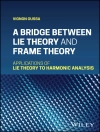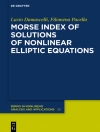These lecture notes originate from a course delivered at the Scuola Normale in Pisa in 2006. Generally speaking, the prerequisites do not go beyond basic mathematical material and are accessible to many undergraduates. The contents mainly concern diophantine problems on affine curves, in practice describing the integer solutions of equations in two variables. This case historically suggested some major ideas for more general problems. Starting with linear and quadratic equations, the important connections with Diophantine Approximation are presented and Thue’s celebrated results are proved in full detail. In later chapters more modern issues on heights of algebraic points are dealt with, and applied to a sharp quantitative treatment of the unit equation. The book also contains several supplements, hinted exercises and an appendix on recent work on heights.
Table of Content
1. Classical Diophantine Equations: linear and quadratic equations, Pell Equation, Diophantine Approximation, congruences. Supplements on Pell equations and irrationality of exp(n) and pi. Notes.- 2. Thue’s theorems on Diophantine Equations and rational approximations: Description of strategy and detailed proofs. Later refinements. Supplements on integral points on curves and Runge’s theorem. Notes.- 3. Heights and Diophantine equations over number fields: Product formulas, Weil and Mahler heights, Diophantine approximation in number fields, the S-unit equation and its applications. Supplements on the abc-theorem in function fields and on multiplicative dependence of algebraic functions and their values. Notes.- 4. Heights on subvarieties of G_m^n: Torsion points on plane curves and algebraic points of small height on subvarieties of G_m^n. Structure of algebraic subgroups. Theorems of Zhang and Bilu and applications to the S-unit equation. Supplements on discrete and closed subgroups of R^n and on the Skolem-Mahler-Lech theorem. Notes.- 5. The S-unit equation. A sharp quantitative S-unit theorem; explicit Pade’ approximations and the counting of large solutions; counting of small solutions. Applications of the quantitative S-unit theorem. Notes.- Appendix by F. Amoroso: Bounds for the height: Generalized Lehmer problem, Dobrowolski lower bounds. Heights of varieties and extensions of lower bounds to higher dimensions; sharp quantitative Zhang’s theorem.












